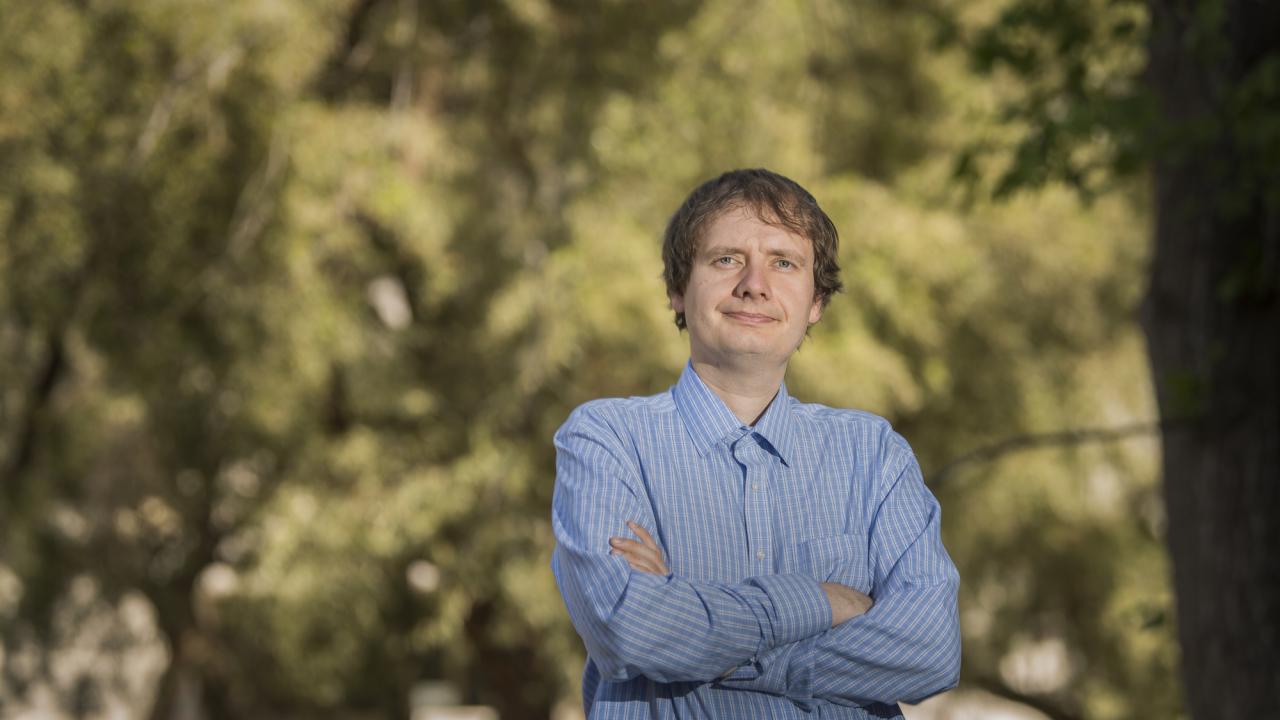
Physicist Jaroslav Trnka Wins UC Davis Innovation and Creative Vision Award
Jaroslav Trnka, assistant professor in the Department of Physics, is one of two winners of the 2018 Early Career Faculty Awards for Creativity and Innovation for his revolutionary work in quantum physics. He is a member of the Center for Quantum Mathematics and Physics (QMAP) in the UC Davis College of Letters and Science, an interdisciplinary institute where mathematicians and physicists work side-by-side to explore quantum field theory, string theory and quantum gravity.
Trnka’s research focuses on new ways to represent the interactions between elementary particles. Elementary particles include quarks and the Higgs boson. These particles are the building blocks of everything in nature. Some combine to produce objects such as stars and galaxies, and some are responsible for fundamental forces like electromagnetism or gravity. Physicists study interactions between elementary particles to better understand how our universe works.
“Elementary particles are the smallest constituents of matter. When you look at the interactions between them, when they approach and collide, we can learn what the fundamental forces are and how they behave,” Trnka said.
When two elementary particles collide, physicists can’t know the exact outcome. However, they can calculate all the possible outcomes of what might happen, known as probabilities or scattering amplitudes. Scientists compare these predicted outcomes with real-world experiments, to check theories against real-world observations.
The calculations can get pretty complicated, with many possible outcomes for a single collision between two particles. Typically, in order to visualize the probabilities, researchers draw many, many pictures called Feynman diagrams. Recently, Trnka and his collaborators discovered an elegant geometry, which they call an amplituhedron, which simplifies this process.
For collisions between gluons, a type of fundamental particle, Trnka and his colleagues realized Feynman diagrams are pieces of an invisible whole — the amplituhedron. Here’s an analogy to help picture it. Imagine a shard of glass from a broken crystal vase. Looking at one piece doesn’t tell you that it was a vase. Putting the pieces together reveals the stunning nature of the whole object. For gluon interactions, each Feynman diagram is like a single shard. “If you calculate the individual diagrams, you just see small pieces which do not have particularly nice properties. The surprising fact is that you can glue them together into a single object,” Trnka said. The concept provides a promising geometric approach for particles that are difficult to represent through Feynman diagrams.
Trnka hopes to expand his research to gravitons, a particle thought to convey the force of gravity. The Innovation and Creative Vision award will support a postdoctoral scholar who will collaborate with Trnka on new research directions, including gravitons. “Of course, I don’t know where the research will go, that’s kind of the most interesting part,” Trnka said.
— Becky Oskin, content strategist in the UC Davis College of Letters and Science
